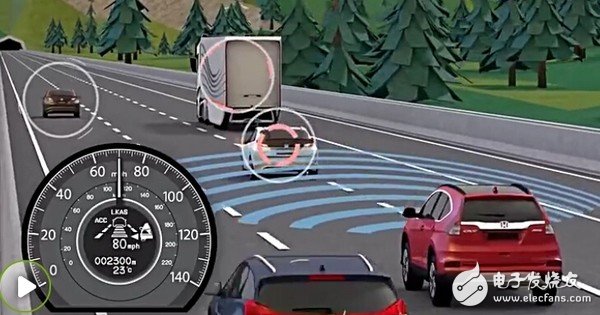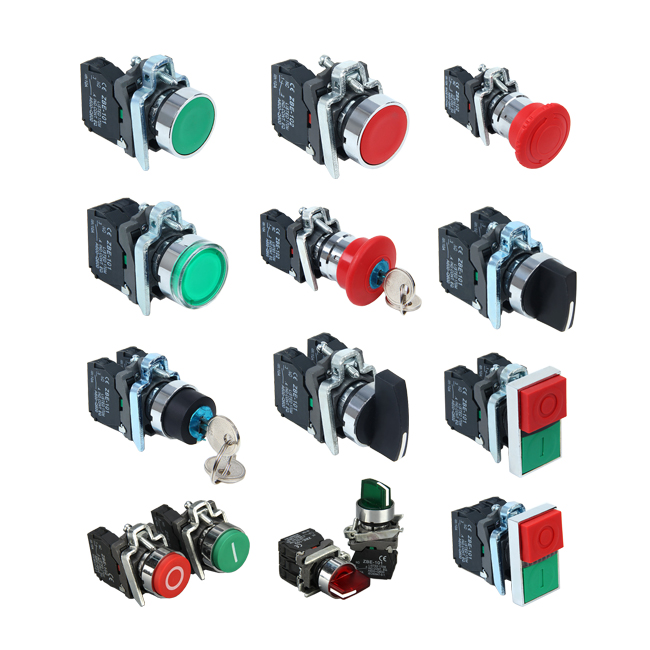Cruise is divided into cruise control and adaptive cruise
Fixed speed cruise
As the name suggests, cruise control is a car cruising at a certain speed, without the need for the driver to operate (step on the throttle), cruise requires a certain speed to enter (this can be calibrated, for example, some cars can enter more than 50). There will be an initial speed (such as 50kmh) when entering the cruise, and the speed can be adjusted by the button (add, subtract, fast increase, fast decrease). The exit of the cruise also has a series of conditions, such as exiting the cruise when the brake is applied, the car The state is not suitable (there is a problem with the parts) and it will also exit the cruise.
Cruise control is relatively simple (in fact, the logic is quite complicated), but there are no complicated sensors, processors and so on.
Constant speed cruising is only suitable for situations with good road conditions, such as high speed and low traffic conditions.
Adaptive cruise
Adaptive Cruise (ACC) is smarter and generally enters cruising at lower speeds. In addition to high-speed road conditions, it can also be applied to urban road conditions.
The sensor (radar) of the car will send instructions to the actuator (throttle, brake, gear) according to the driving state (vehicle distance and speed) of the preceding vehicle and the vehicle, and then determine the command by the ECU. Driving state, whether to accelerate or decelerate, or to exit the cruise.
The most basic function of adaptive cruising is to keep the vehicle running longitudinally. When there is a danger of collision, the vehicle will prompt the driver and perform active braking intervention.
To say the advantages, it is clear that the ACC relieves the driver's driving fatigue to some extent.
| Composition of the ACC system
The first is the sensor, which currently has radar (long-range radar), ultrasonic ranging sensor, infrared ranging sensor and so on.
The sensor is equivalent to the "eye". For the eyes, the key is to identify the front car in the lane and eliminate the effects of the side lane vehicles.
Once the eye receives the signal, it is passed to the ACC cruise control system in the car's brain. The system queries a series of rules and regulations to determine how the car should travel. These rules and regulations are the control strategies in the ACC.
The safety distance model (meaning how close the car is to the front car) is one of the main control strategies controlled by the ACC system; he can't be too big, otherwise it will lead to protests from the vehicles behind you; it should not be too small, otherwise there is a risk of rear-end collision; The distance is a function of the minimum stopping distance and the current speed.
PS: The safety distance is not a fixed length unit, but the so-called TTC, TIme to collsion, which assumes that the current relative speed is maintained and the time required for the two cars to catch up.
After the brain tells the car what to do, the next step is the executive agency, which is equivalent to the "hands and feet" of the car.
Actuators include throttle, brakes, and gears. Through the movement of these mechanisms, the car is manipulated.
To say the shortcomings is not as good as talking about the development of ACC.
| Development of ACC
ACC is slightly immature compared to other automotive electronic control technologies. The difficulty lies in the adaptability to the road conditions.
Adaptive cruise as a driving aid, after all, can not be as intelligent as people, can distinguish all road conditions, and respond accordingly. At present, ACC is mainly used in roads with good road conditions (high speed or elevated), and is the judgment of the target vehicle in the main lane.
For the side lanes, as well as the monitoring of multi-target vehicles; the pre-judgment of vehicles with in-line intentions is still insufficient. For example, if the front car suddenly enters the corner, then the car may think that the safety distance is too large, and the misjudgment suddenly accelerates into the curve.
The following is an analysis of some typical road conditions:
1. If there is no vehicle on the current side, the ACC will cruise at a certain speed (the speed of the cruise is within the range of the speed limit you set);
2. When the vehicle appears in the radar monitoring range, if the vehicle speed is too high, the car will decelerate and follow the preceding car at a certain speed to maintain a safe distance. If the front car cuts out the lane, the car will automatically Accelerate to set the speed.
As shown in the following figure (video screenshot), there is no car in the front lane, and the speed is 80km/h:

Figure 2 below, the vehicle appears in the front lane, and the speed decreases:

XB4 series Pushbutton Switch are used in industrial for controlling circuits of AC50Hz or 60Hz,rated operation voltage 380V or below and DC operational Voltage 220V or below for controlling in magnetic starter, contactor,relay and other electrical circuits. The buttons indicators can also be used in the place with indicated light or signal. They meet with the standards: IEC 60947-5-1.
XB4 Series Metal Pushbutton Switch is the new design in the field of Push Button Switch. Which with stronger metal plate and very easy to be installed.

XB4 Series Pushbtton Switch,Push Button Power Switch,Mini Push Button Switch,Push Button Lamp Switch
Ningbo Bond Industrial Electric Co., Ltd. , https://www.bondelectro.com
